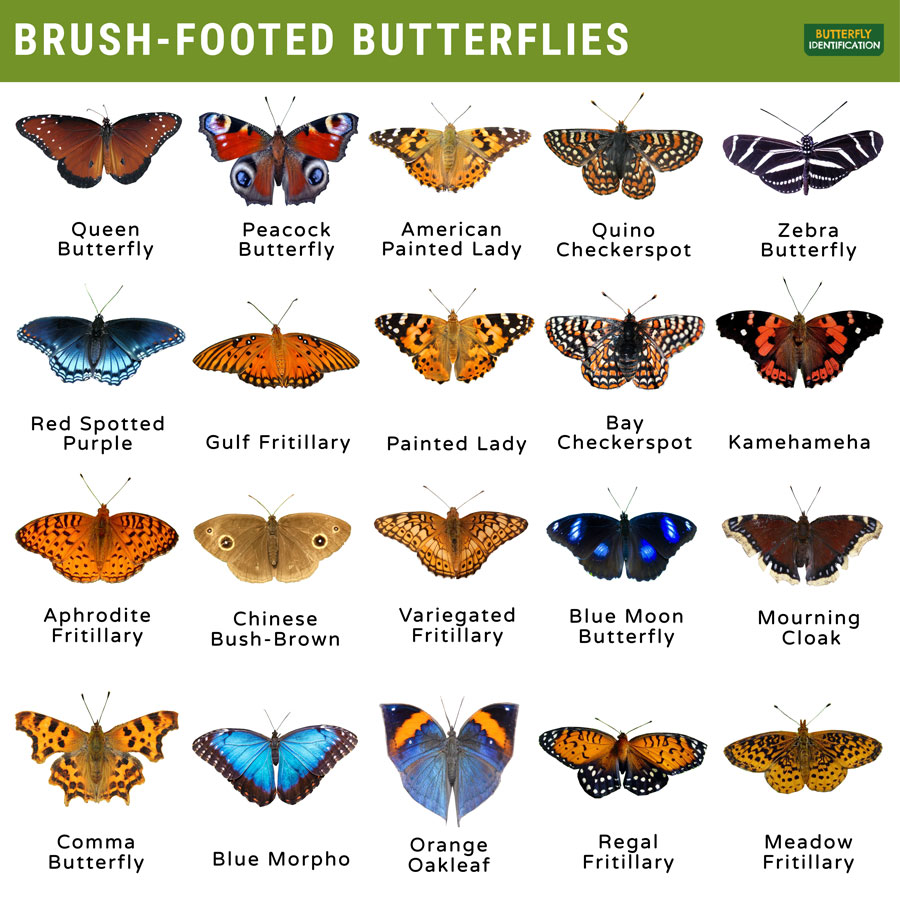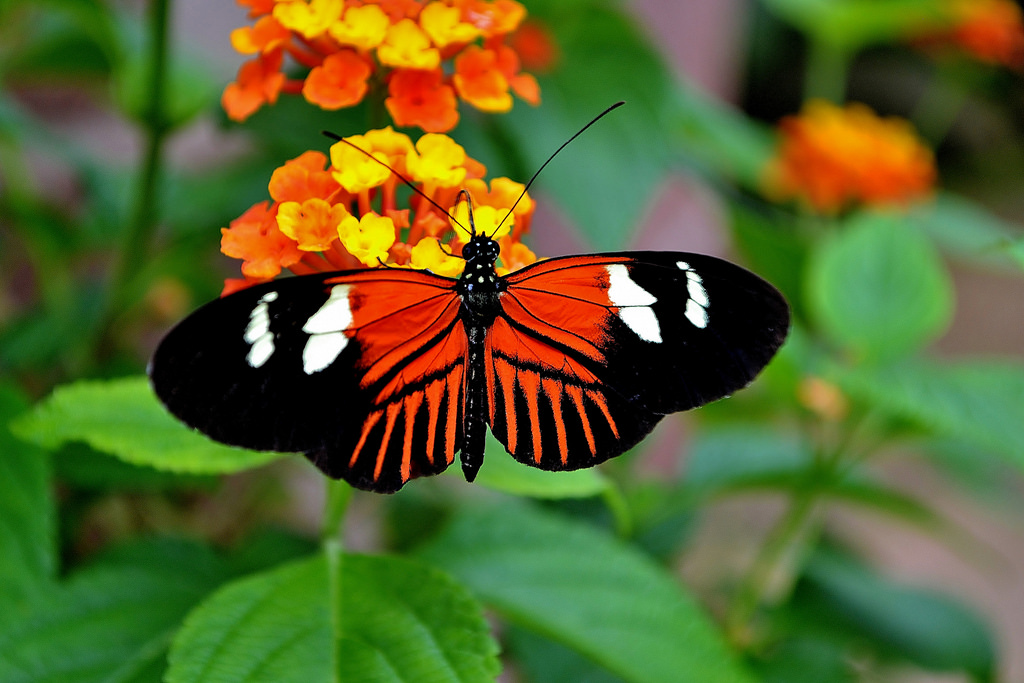Brush-Footed (Nymphalidae)
The Nymphalidae is the largest of the butterfly families comprising over 6000 species distributed throughout the world. The monarchs, admirals, and emperors are some of the significant butterflies of this family.

Types of Brush-Footed Butterfly
Butterflies in This Family
Description and Identification
Caterpillar
They have a velvety, black and speckled body filled with hairy of spiky projections, alongside small, white dots.
Pupae
The pupa or chrysalids possess shiny spots, often seen hanging with their head downwards.
Adult
Sexual Dimorphism: Present
Color and Appearance: The common colorations of the butterflies of this family include orange, brown, black and yellow, whereas, blue and purple colored butterflies also exist, though rarely. The shapes of the wings differ, varying from one species to the other. Some may have irregular margins like commas and angle wings, whereas certain species even have tail-like projections on their wings.
Average Wingspan: 4 to 8 cm
Flight Pattern: Fast an erratic
Eggs
About A hundred eggs are laid in a cluster, and they are green in color.
Quick Facts |
| Other names | Four-footed butterflies, brush-footed butterflies |
| Distribution | Throughout the continents of America, Europe, Africa, and Asia |
| Habitat | Park, gardens, brush areas, woodlands, stream beds, dense undergrowth, |
| Lifespan of adults | 14 days on an average (the numbers may differ from one species to the other) |
| Host plants | Milkweed, white vine, blazing star, thistles, cosmos, ironweed, cosmos, aster, joe-pye, olona, and mamaki |
| Adult diet | Flower nectar |
Did You Know
- The brush-like hairs on their forelegs give them the name brush-footed butterflies.
- Rafinesque had first introduced the name Nymphalidae to the order Lepidoptera.



